by Emily Weinstein and Paromita De
A pervasive narrative portrays contemporary youth as more plugged-in to their social networks than into social issues. Stand Up!: 75 Young Activists Who Rock the World And How You Can, Too! makes a case for the converse through its collection of stories about young people dedicated to making a difference. The new volume, edited by John Schlimm, shines a light on the dedication and determination of these youth and endeavors to motivate other young people to pursue activism. The book’s message – that “you can [do it], too” – is a sentiment we subscribe to as researchers who care deeply about youth engagement. Yet, in the process of highlighting inspiring stories of young activists, the book also raises important questions about who is civically engaged, and how they are getting involved. These questions, and lessons drawn from the volume, are crucial if we intend to widen the breadth of young people who are engaged.
The book’s vignettes portray activists who range in both age and interests. Featured youth include a brother and sister who started working to protect endangered species at ages 3 and 5, a 9 year-old who collects donated toys to be given to children who have lost their belongings in fires, a 14 year-old who raises awareness on water issues, and a college graduate who advocates nutritious eating habits for elementary school students by cultivating a student-tended garden. What unites these students is their passion – for each, an idea or issue is so captivating that it moves them to action. Similar to trends mentioned in Barendsen’s paper on Social Entrepreneurs, many of the young activists trace their passion to life-changing experiences, such as suffering from an illness or being exposed to other’s hardships.
Another common thread across many of the featured stories was the importance of “supporters” – often parents or other adults around them who could not only encourage their passion, but also serve as resources to these young activists. These adults played instrumental roles in helping youth actualize their civic goals: a mother who made an important connection with a non-profit group to incorporate her teenage son’s initiative to provide donations to veterans; a father who contacted a local news station to publicize his blind, 7-year-old son’s mission to bring Braille labels to grocery stores; another father who organized a group of climbers to accompany his 8 year-old young son and he for their climb up Mount Kilimanjaro to fundraise for a cure for Duchenne; parents who helped their 6 year-old son found an organization that works to make hospital experiences better for sick children by arranging visits from National Hockey League players and providing toys and games.
It appears that this combination of passion and support is a profound recipe for engagement and “civic success.” But given this apparent nexus, we wonder how we can support youth who may be concerned about an issue but do not have similar resources? It is certainly admirable of parents to encourage social consciousness and participatory citizenship among their children, but not all youth are situated in families or communities where adults have the time and resources to help young people turn their civic tendencies into established projects. Is having supporting adults around youth to inspire them to think about causes a necessary condition for these youth to be civically engaged? If so, how can we extend key supports to help all youth to engage in and create solutions for society? Further, many of the young activists discuss the influence of supporting adults on their interest in civic engagement in the first place. They note how a parent or another adult first discussed an issue with them, which in turn evoked a sense of compassion and a related interest in activism. As for youth whose parents may not be civically engaged themselves, how can we provide them with requisite awareness and resources to see themselves as change agents?
The vignettes reiterate the importance of ensuring that young people’s emerging passions are met with critical supports to help them translate ideas into activism. Perhaps unsurprisingly, we’re left with the conclusion that caring adults who serve as role models and mentors have a uniquely positive influence on youth’s goals and their paths to reach them. Linking more youth with caring, engaged adults or with instrumental supports to help them turn their interests into action is a worthwhile endeavor for civic engagement initiatives. Programs like Mikva Challenge are already supporting youth in these ways, and organizations like DoSomething.org are exploring the possibility of delivering supports for youth engagement through digital technologies.
In a different vein, the vignettes also raise a question for us about narratives of “civic success,” particularly related to one element that is the cornerstone to success stories in any domain: failure. Although several stories mention moments or instances that cause students to backtrack their efforts or feel temporarily discouraged (such as a middle school student, who grew up to be a special education teacher, being teased by his classmates for being labeled as ‘emotionally disturbed’), the vast majority of stories tend to focus more prominently on the interest, achievements and outcomes related to these young people’s initiatives. On one hand, the focus on positive elements of each story contributes to the message that activism is accessible to all (it’s hard to imagine feeling like ‘you can do it too’ after reading a collection of stories about people who couldn’t). But, if we “sugarcoat” stories about failure or create an impression that success, achievement and recognition are hallmarks of civic engagement, we risk providing an incomplete picture of what civic engagement entails. Even if youth are motivated to become engaged, they may not persevere when they begin encountering challenges—and they almost certainly will, since social issues tend to exist in the first place because they are difficult to solve. If we want to prepare young people for sustained civic engagement, we need to be upfront about the rewards and the challenges they may encounter, in order to set the critical groundwork for both an orientation toward achieving “civic success” and a “civic resilience” that allows activists to see initiatives through in spite of obstacles.
Stand Up! provides an impressive array of stories that can open young people’s minds to the possibility of activism. The vignettes reinforce the message that youth can take issues that matter to them and become leaders in creating change. At the same time, the collection surfaces questions about the factors that facilitate youth “rock[ing] the world.” Schlimm is unquestionably successful in crafting a different narrative about 21st century youth than often pervades the popular press – and we’re thrilled to see stories that shift the focus from the art of the selfie to the power of selfless activism.





